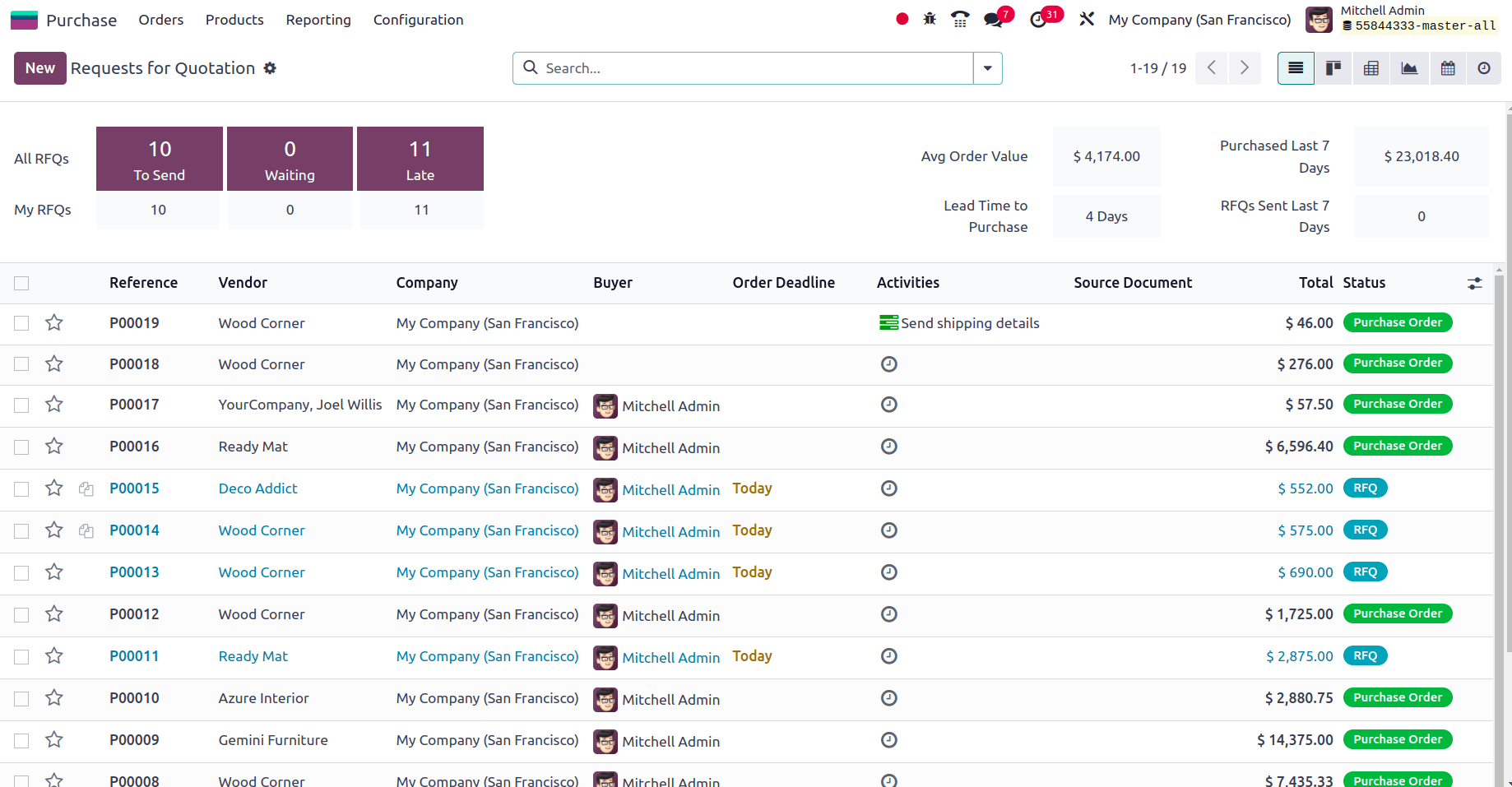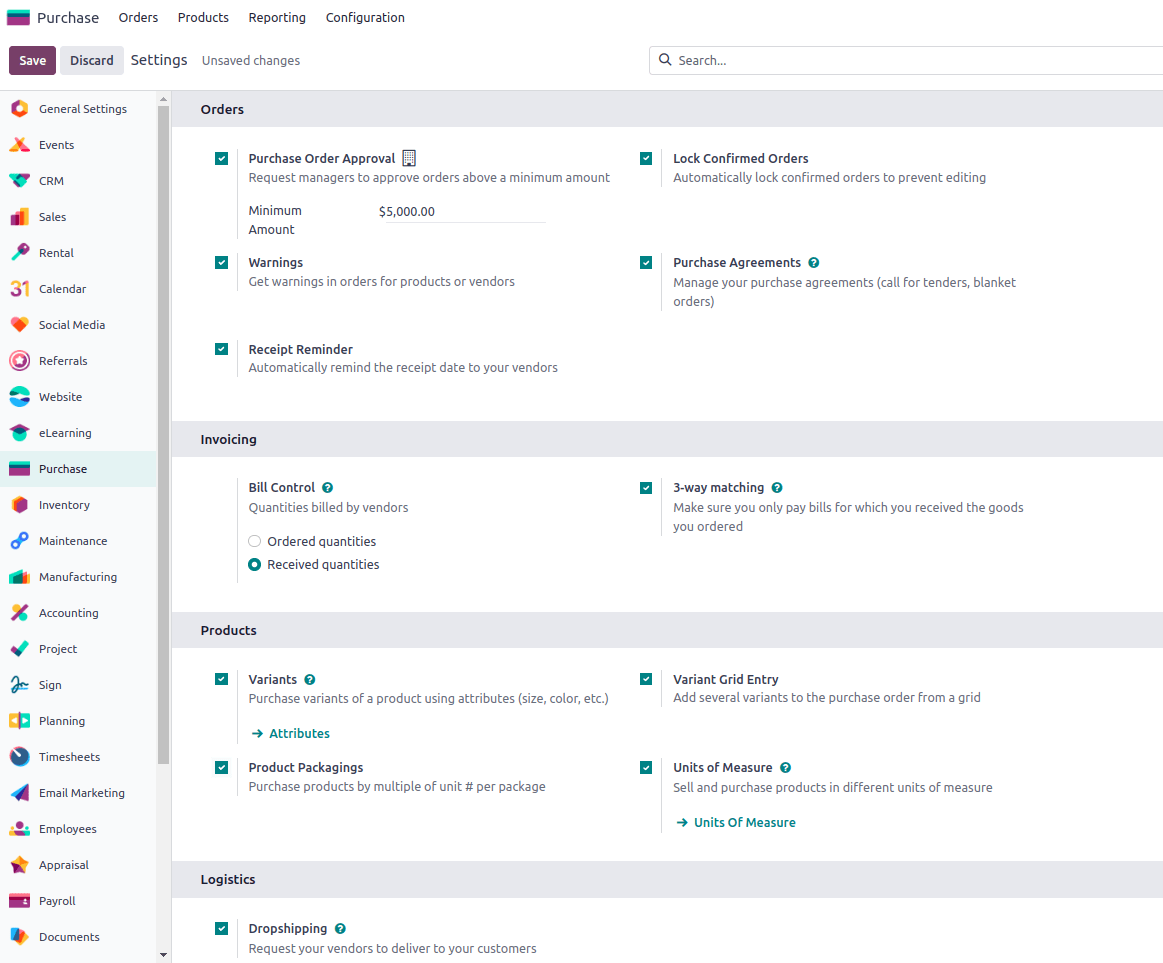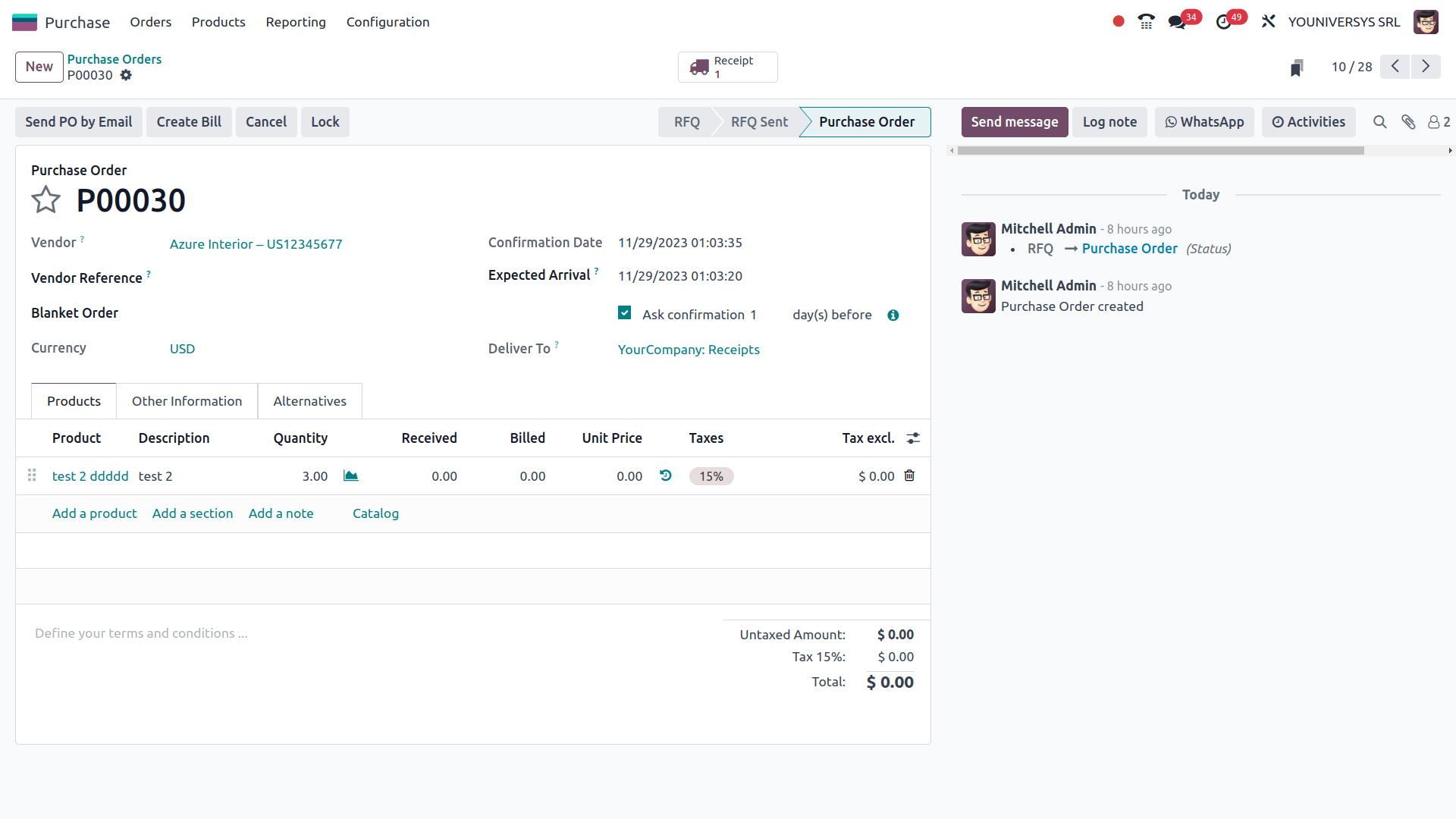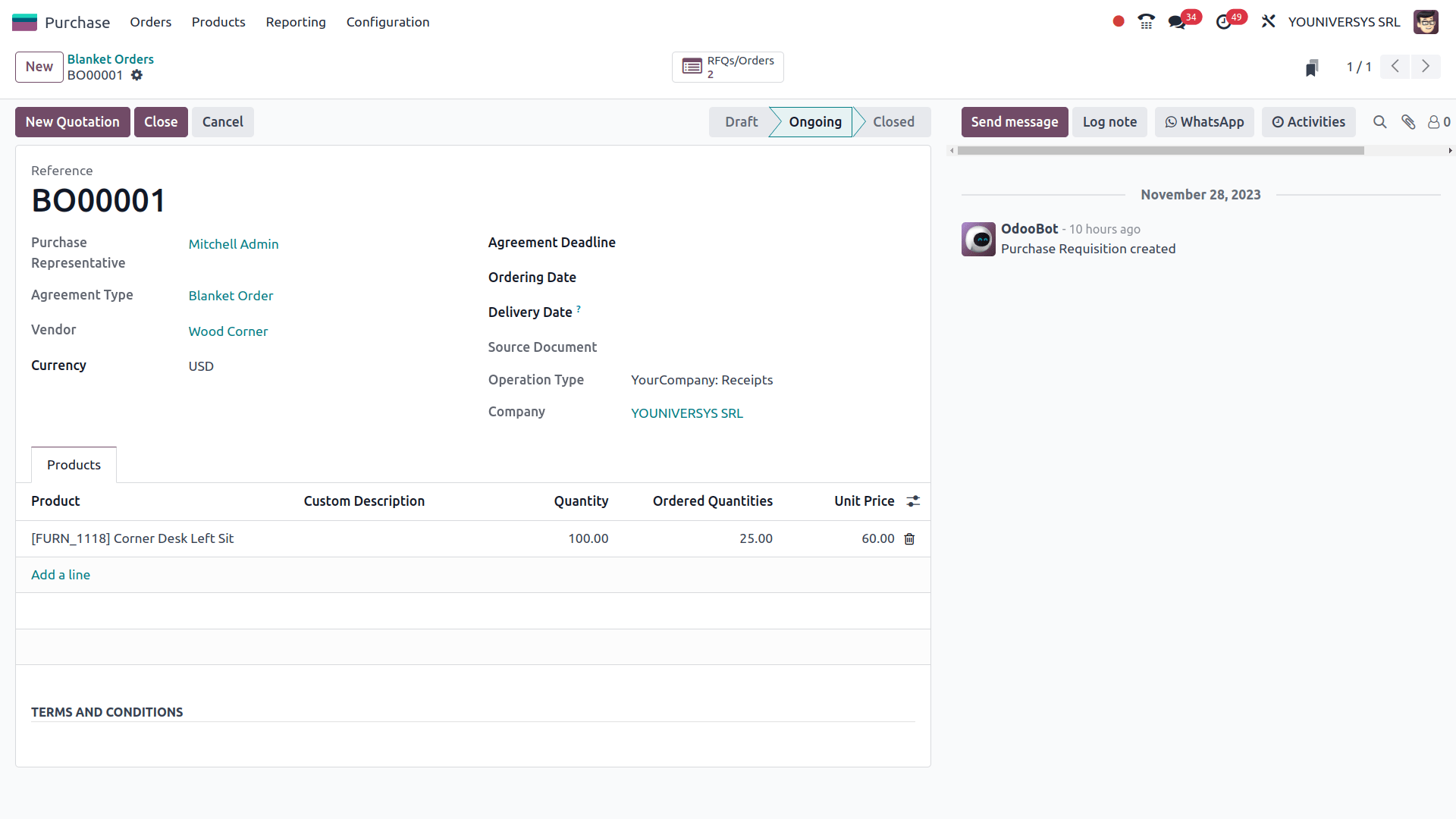Dedicated Purchase Management Dashboard
A dedicated purchase quotation dashboard offers a comprehensive overview of all the purchase quotations that have been sent out. It presents a tabular view of the quotations, allowing for easy analysis of purchase operations. Users can customize the dashboard’s representation to suit their specific needs and preferences, with options to view the data in various forms.
This dashboard serves as a centralized hub where users can monitor and manage all aspects of the purchase quotation process. Whether tracking the status of quotations, analyzing trends in supplier responses, or identifying potential cost-saving opportunities, the dashboard provides valuable insights at a glance.
With customization features, users can customize the dashboard layout to highlight key metrics or prioritize specific information. This flexibility ensures that each user can configure the dashboard according to their unique requirements, optimizing efficiency and effectiveness in purchase operations management.
In summary, the purchase quotation dashboard offers a user-friendly interface for overseeing and optimizing the purchase quotation process, enhancing transparency, and facilitating informed decision-making.

Bring in Automation for Product Procurement
You have the ability to configure automated reordering rules to precisely match your business demands. These rules are customizable within the inventory system, allowing you to define them according to your specific requirements. This enables seamless auto-replenishment of product stocks based on predefined criteria.
Each product can have its own unique reordering rules, tailored to its individual characteristics and demand patterns. By crafting custom reordering rules, you ensure that your inventory remains optimized and replenished efficiently, without manual intervention.
These rules empower you to set thresholds and triggers that automatically initiate the replenishment process when stock levels reach predetermined levels. Whether it’s based on minimum stock quantities, lead times, or other parameters, the system can proactively manage inventory levels to meet demand and avoid stockouts.
In essence, the flexibility of custom reordering rules allows you to fine-tune your inventory management strategy, optimizing efficiency and ensuring that products are consistently available to meet customer needs.

Define Multiple Vendors
You can manage purchase operations for a product across multiple vendors seamlessly. Each product can be associated with various vendors, with their respective price lists and descriptions readily available.
This setup enables you to procure the product from any of these vendors at any given time, based on factors such as price competitiveness, availability, or specific requirements. By having comprehensive vendor information linked to each product, you can make informed decisions and efficiently manage your procurement process.
This flexibility allows you to adapt to changing market conditions, supplier availability, or specific business needs. It also fosters healthy vendor relationships and enables you to leverage the best terms and conditions from different suppliers for each purchase, optimizing your procurement strategy.

Well-defined Order Management Tools
Effectively manage your purchase orders by leveraging robust management tools designed to streamline the process. These tools include purchase order approvals and warning mechanisms, which play a crucial role in maintaining control over expenditures and ensuring that purchases adhere to predefined limits.
With purchase order approvals, each purchase request undergoes a verification process, where managers can review and authorize the expenditure before it’s finalized. This step ensures accountability and oversight, reducing the risk of unauthorized purchases or budgetary overspending.
Additionally, warning tools serve as proactive alerts, notifying users when a purchase order is nearing or exceeding established thresholds. This early detection system empowers managers to take timely action, such as reassessing the purchase or seeking additional approvals if necessary, to prevent budgetary constraints from being breached.
By incorporating these management tools into your procurement workflow, you can establish a structured and controlled purchasing environment. This not only enhances financial accountability but also promotes efficient resource allocation and cost-effective decision-making across your organization.

Advanced Controlling Tools
The dedicated control tools provide comprehensive oversight of your product procurement process, ensuring meticulous management at every stage. These tools are designed to align with the principles of three-way matching, ensuring that all products are procured by quotations and purchase orders.
Through three-way matching, purchases are verified against three key documents: the purchase order, the supplier invoice, and the receiving report. This stringent validation process guarantees that the products received precisely match what was ordered and invoiced, minimizing discrepancies and errors.
By centering procurement rules around three-way matching, you establish a robust framework for accuracy and compliance. Any discrepancies between the purchase order, invoice, and receiving report trigger alerts, enabling prompt resolution and preventing discrepancies from slipping through unnoticed.
This approach not only enhances accuracy and accountability but also fosters trust and transparency in your procurement operations. With complete control over product procurement, you can optimize efficiency, mitigate risks, and confidently uphold compliance standards.

